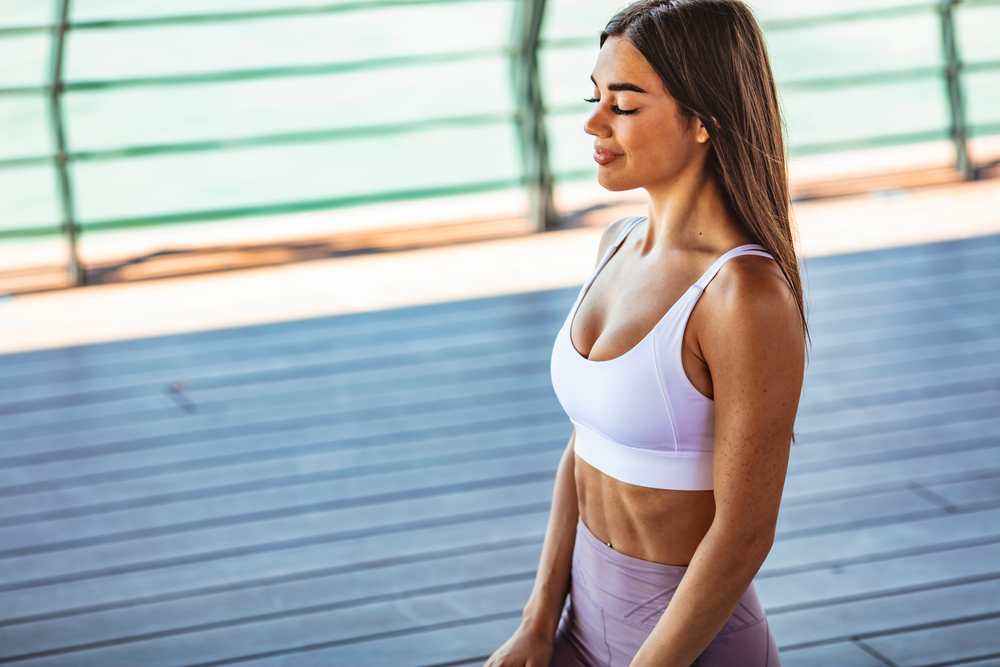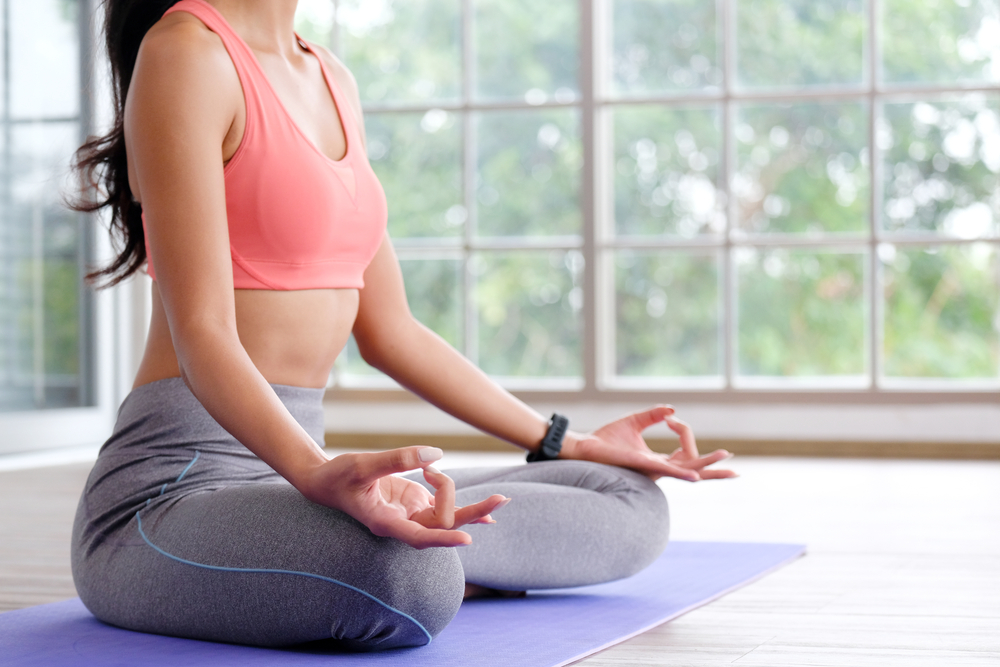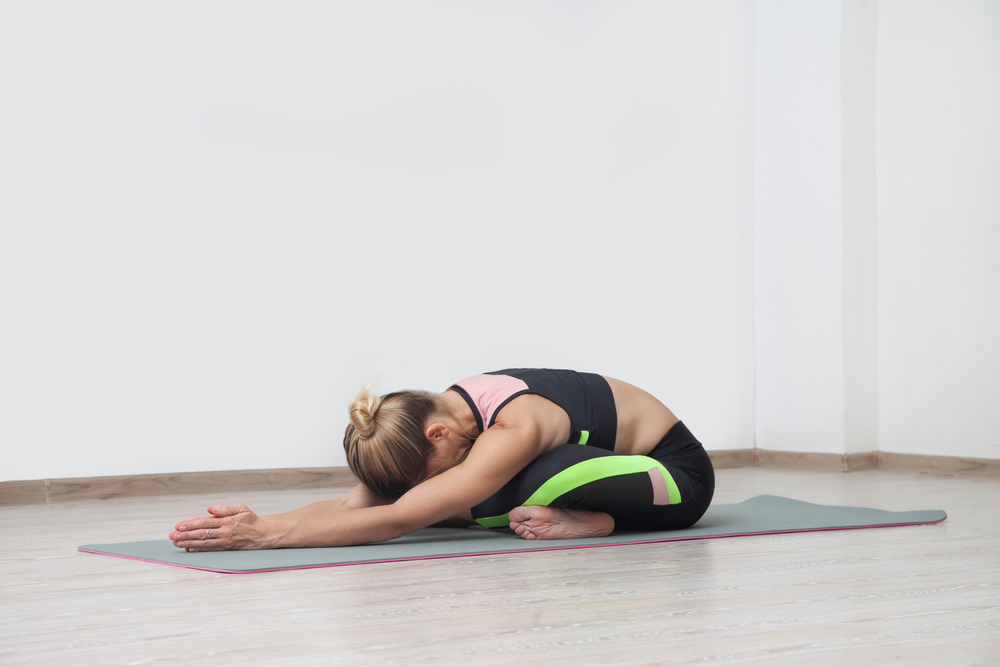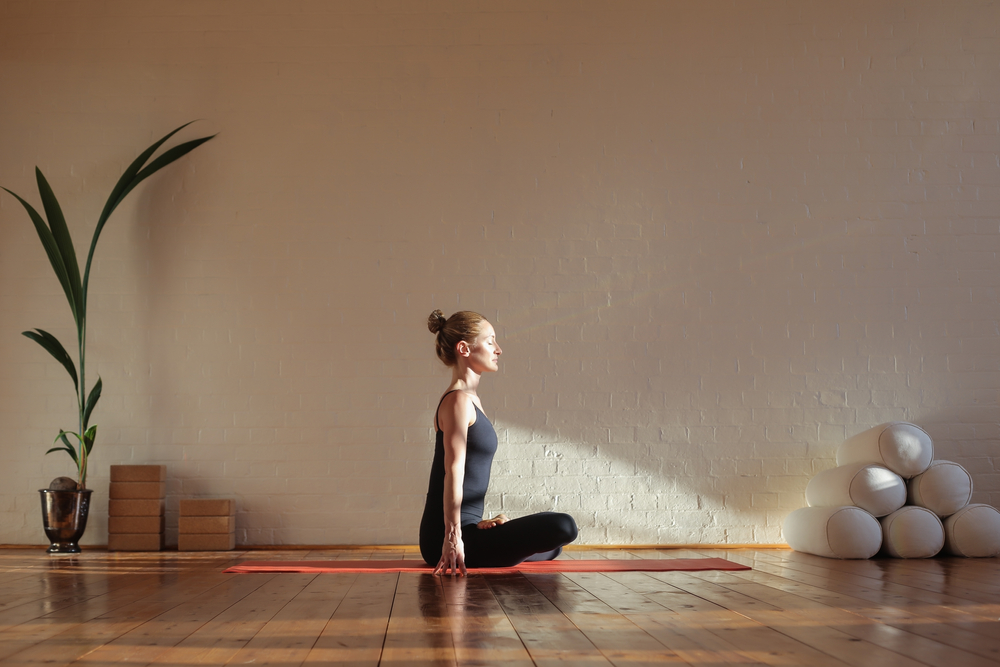by Susan Williams: Breath is an important part of yoga. Through your breath, you can learn to control and balance Prana, which is the vital life energy that exists in everything. Breath control techniques are called pranayama…
Pranayama is one of the eight main limbs of yoga according to Patanjali’s Yoga Sutras.
There are different kinds of pranayama, depending on what your intention for your practice is. One of the first pranayama practices taught to beginners is called Ujjayi Breathing. This pranayama helps you to maintain focus, heats up your body for asana practice, and has a calming effect.
Why Is Pranayama Important

Pranayama is literally translated from Sanskrit as follows:
Pran – energy
Ayama – expansion
More than breath control techniques, pranayama teaches you how to control the energy inside you. That is just as important as asana and the other limbs of yoga to attain union between your mind, body, and universal consciousness.
Many pranayama practices were detailed in the Hatha Yoga Pradipika. This is a text on yogasana and other yoga practices written by Svatmarama in the 15th century.
According to the Hatha Yoga Pradipika, these are some of the different forms of pranayama:
- Kumbhaka – breath retention
- Nadi Shodhana – alternate nostril breathing
- Maha Bandha – the great lock; a combination of Mula Bandha, Uddiyana Bandha, and Jalandhara Bandha simultaneously held with breath retention. (Described as only for advanced yoga practitioners.)
- Ujjayi – victorious breath
- Sheetali – inhaling through the tongue shaped like a tube
- Bhastrika – bellows breath
- Kapalabhati – breath of fire
- Brahmari – humming bee breath
The Meaning of Ujjayi Breath

Ujjayi pranayama is translated from Sanskrit as victorious breath. Some also call it Ocean Breath, Darth Vader Breathing, or simply breathing with sound.
This pranayama helps you to synchronize your movements, especially in dynamic vinyasa yoga classes, with the length and rhythm of your breath. In a still Hatha yoga class, it helps you remain focused, present, and alert.
The word can be divided into two:
Uj – great
Jay / jii – to conquer
It is characterized by deep, slow breaths through your nostrils with no pauses between inhales and exhales.
Control of your breath should come from your diaphragm. The length and depth of each breath is determined by how much you can control the movement of your diaphragm.
The distinctive hissing sound of ujjayi pranayama is created by a gentle constriction of your glottis.
It is said that if you practice ujjayi breathing, you are the victorious one who is ultimately also victorious over the cycle of life, death, and rebirth.
According to Svatmarama, when pranayama pierces your heart, you become the divine yogi.
Ujjayi Breathing Step-by-Step

Ujjayi pranayama can be practiced in any asana and even while moving. As a beginner, it’s best to connect with your breath in stillness to start.
Practice a few rounds of ujjayi breathing in a static, neutral pose like Sukhasana (Easy Seated Pose), Padmasana (Lotus Seat Pose), or Tadasana (Mountain Pose) so you can completely focus on your breath.
- Breathe normally and bring your awareness to each inhale and exhale.
- Relax, and begin to lengthen and deepen your breath. Do not overdo this step. Stay within your personal comfort level. No need to count or set any goal for yourself.
- Begin to add sound to your breathing. Gently constrict the back of your throat – more specifically the glottis so that you can control the amount of air that passes through.
It may help to open your mouth at first and exhale with a “haaaaa” sound as if you want to fog up a glass window in front of you.
Maintain this position of your tongue and throat then close your mouth. Continue breathing through your nose.
- Bring your attention to the sound of your inhales and exhales. It doesn’t matter how loud or soft it is. It’s more important that you can hear this sound which is like the soothing sound of the ocean heard in a seashell when you hold it up to your ear.
- Now focus on how this pranayama moves energetically through your subtle anatomy.
Your breath fills your lower belly first when you inhale. This activates the Muladhara and Swadhisthana Chakras.
As your breath rises to your lower rib cage, it activates the Manipura and Anahata Chakras.
Then, as your breath pushes towards your upper chest and throat, prana moves through your Visudhi, Ajna, and Sahasrara Chakras.
- Completely and with control, release the air when you breathe out. Try to keep the length of your exhale equal to the length of your in-breath with no pauses or breath retention in-between.
However, don’t waste too much energy on this. It’s more important to keep each inhale and exhale deep and long.
When To Practice Ujjayi Breathing

The beauty of ujjayi breathing is that it can be practiced anywhere. And it can be particularly helpful in the following situations:
- When you are practicing Hatha or Vinyasa Yoga
- When you are meditating
- When you are feeling aggravated or stressed
- When you are doing non-yoga related exercises such as cycling, aerobics, or jogging
- When you are feeling nervous or anxious
- When you need to slow down your heart rate
The Benefits of Practicing Ujjayi Pranayama

Ujjayi pranayama breathing techniques help calm your mind by giving you something to focus on. It also helps your heart rate slow to a rhythmic, restful pace. This helps keep you in the present moment when practiced properly.
These are other benefits of ujjayi breathing:
- Helps you release pent up emotions
- Brings more oxygen into your bloodstream
- Builds internal body heat
- Regulates and lowers your blood pressure
- Promotes the natural flow of prana
- Helps maintain a regular rhythm while practicing yoga asana
- Increases self-awareness
Contra-Indications of Ujjayi Pranayama

Sometimes too much practice of a pranayama technique may not be good for your yoga practice of health in general. There are certain reasons why you should not practice ujjayi breathing too much or for too long of a time.
For example, some teachers argue that ujjayi pranayama for the entire length of a modern postural yoga class is simply too much for the energetic and physical body to handle and can be detrimental to your mind and body connection.
Some schools like Ashtanga Yoga, as founded by Sri Pathabi Jois teach that ujjayi breathing should always accompany asana and vinyasa.
But others, such as those who follow the teachings of Rajadhiraja Yoga say that ujjayi should be practiced separately from asana and only when appropriate.
Even though the benefits of ujjayi pranayama include giving you something to focus on and internal heating of your body, too much ujjayi practice can be the very cause of disconnection from your body and agitation of the mind, as well as overheating.
This is why it is important to also bring your awareness to the interactions of your breath, and therefore prana, on the subtle energies in your system.
It is also important to learn proper pranayama techniques from a guru who is aware of these energetic interactions and how they affect you.
Alternatives to Victorious Breath Pranayama
You may practice other breath awareness techniques which will not affect your subtle anatomy as much as ujjayi and other pranayama.
Diaphragmatic Breathing

This breathing exercise consists of just three steps:
- Sit or stand with your spine tall and shoulders rolled up, back, and down.
- Inhale through your nose as much as you can. Push this air all the way down to your belly. Relax your belly so you have more space for air to enter.
- Exhale slowly through your nostrils. The length of your out-breath should be twice as long as your inhale.
Repeat this exercise 5 to 10 times.
Mindful Breathing

Mindful breathing exercises are powerful meditations in themselves. It allows you to simply follow your natural breath and it’s natural rhythms and flows. Learning how to bring your awareness on your breath gives you something to anchor on quickly in times of stress to help calm you down.
Here are three basic steps to practice mindful breathing:
- Sit or lie down in a comfortable position. Ensure your back is straight and your body is relaxed.
- Close your eyes and settle into your body and the space that you fill in the room. Scan your body and ask yourself questions like, “how does the air feel against my skin?” and, “what does the earth feel like beneath my body?
- Bring your attention to your breath without changing it’s natural pattern. Observe exactly how it is in each moment. Also observe the subtle movements in your body as you breathe and the small pauses that may occur between each inhale and exhale.
Practice this for anywhere between 30 seconds, to 3 minutes, to 30 minutes, or whatever length of time you can set aside for meditation and mindful breathing.
Diaphragmatic breathing and mindful breathing exercises can help you calm down and bring you into each present moment just as well as ujjayi pranayama. They are also useful tools to help strengthen your mind and body connection.
These breathing practices will help train you to be more sensitive to the energies flowing through your system so that you can understand and practice other pranayama and breath control techniques better.
According to Patanjali’s Yoga Sutras, asana is preparing your body for pranayama and pranayama is preparing for concentration. By practicing pranayama like ujjayi, you are developing your mind for concentration required for dharana, which is the sixth rung of yoga.
In turn, once you have mastered dharana, you will be prepared for sustained concentration, which is dyana, or meditation. This meditation is deeper than meditation practice. This happens when you cease to practice meditation and enter a deep state of relaxation that is being meditation itself.
From this, you become ready for samadhi, where you achieve ultimate union with the divine consciousness and your own mind becomes devoid of its own form.
Conclusion

Ujjayi breathing is one of the first pranayama practices that yoga practitioners learn. It is easy to learn and extremely beneficial when practiced properly. It can help calm your mind, keep you focused, increase your internal body heat, and keep you energized.
The distinctive sound your breath makes gives this Victorious Breathe Pranayama its nickname of Ocean Breathing, which also points to the soothing qualities of this breath control technique.
Whether you use this pranayama practice during your yoga asana class or during meditation, it will help you become more aware of the subtle energies in your body and allow prana to flow more freely in your system. This prepares your body and mind for meditation and the deeper practices of yoga.










































